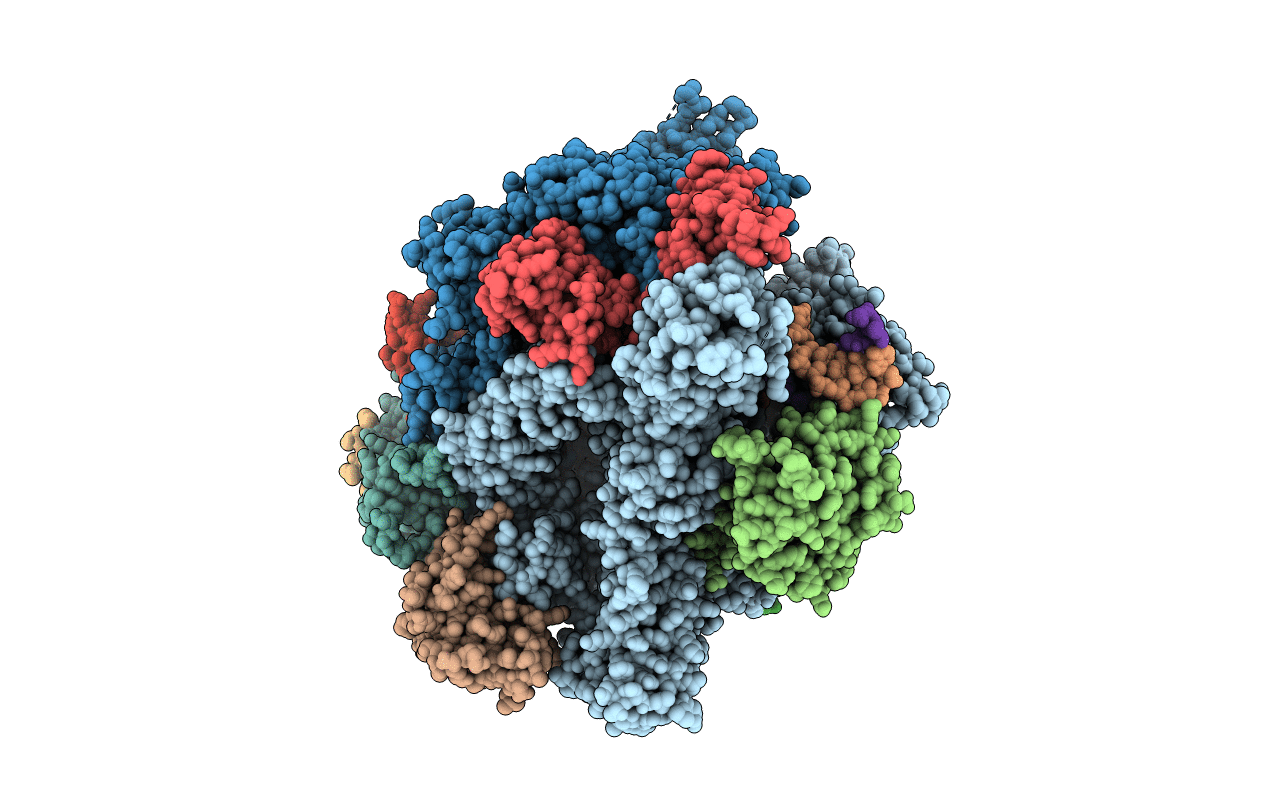
Deposition Date
2019-10-18
Release Date
2020-06-10
Last Version Date
2023-10-11
Entry Detail
PDB ID:
6UPX
Keywords:
Title:
RNA polymerase II elongation complex with 5-guanidinohydantoin lesion in state 1
Biological Source:
Source Organism:
synthetic construct (Taxon ID: 32630)
Saccharomyces cerevisiae (strain ATCC 204508 / S288c) (Taxon ID: 559292)
Saccharomyces cerevisiae (strain ATCC 204508 / S288c) (Taxon ID: 559292)
Method Details:
Experimental Method:
Resolution:
3.40 Å
R-Value Free:
0.26
R-Value Work:
0.21
R-Value Observed:
0.22
Space Group:
C 1 2 1


